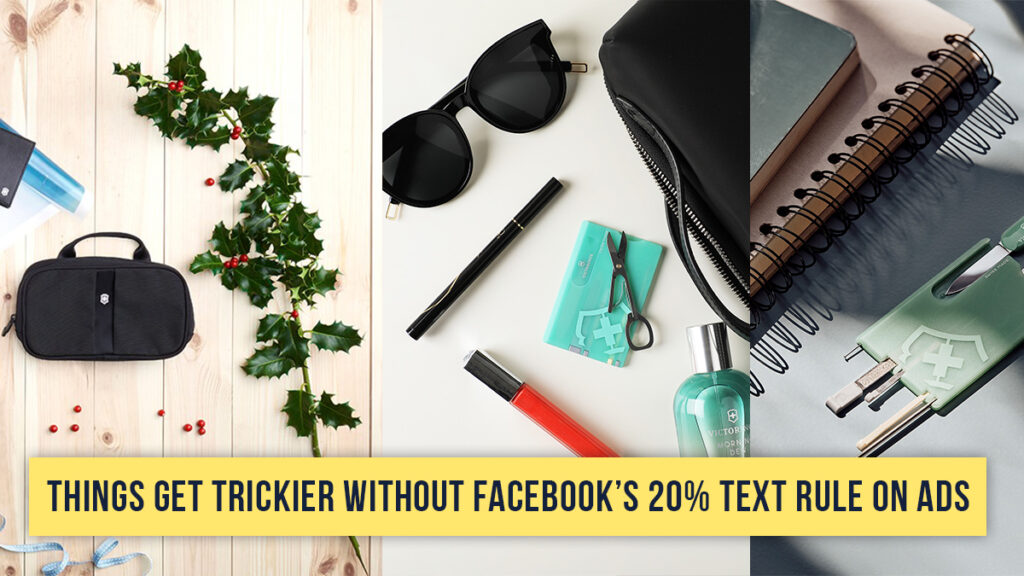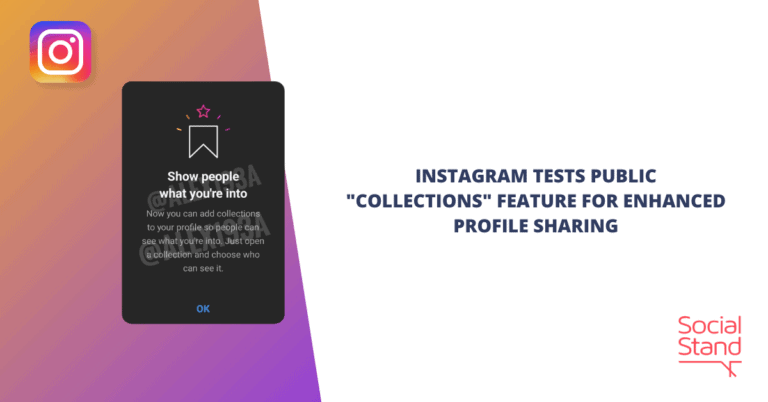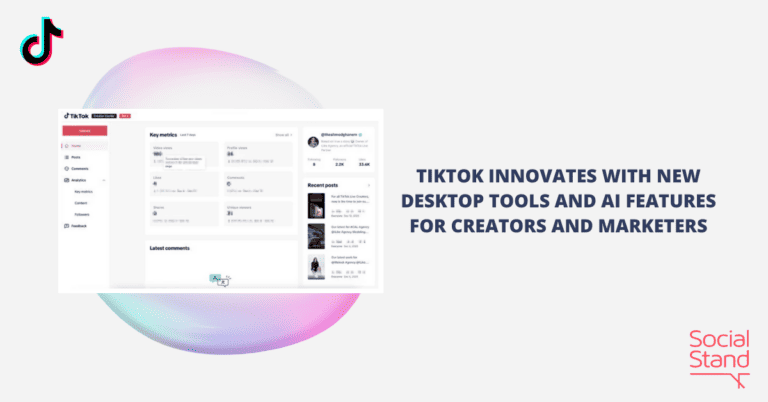Facebook recently lifted its rule that the text on advertising images cannot exceed 20%. This move seems to offer ads more freedom. Ad designers can recall painstakingly working on their designs, only to have them rejected by this 20% requirement. Even the text of a logo is not spared and counted towards this metric.
Facebook has been relaxing its 20% text rule for a while now. It started with offering a grid tool that overlays a 5×5 grid over your image. For your ad image to be approved, no more than five of the 25 boxes should contain text. Facebook later adjusted this rule, such that ads could be placed, but the reach is restricted relative to how much the 20% text was exceeded. This results in higher advertising costs. The ambiguity surrounding this move left us all the more wanting. Now that the 20% text restriction has been officially lifted, does it mean greater freedom in the design process? Or does it leave us at a loss?
Bigger and More Text = Better Ad Performance? Think Again
As a digital advertiser, I am not very optimistic about this change. Perhaps the only thing I am optimistic about is that more brands as well as friends in the SME space will be engaging professional advertising services as a result. Facebook has offered gentle reminders about the importance of high-quality advertising content by easing the restriction.
I often hear designer friends lament how their bosses want their brand’s logo to be very big. The text in the ad image also needs to be big. Such ads may start appearing on Facebook and Instagram again. It’s unfortunate that without guiding tools or hard and fast rules, ad images may become populated with an overwhelming amount of text. This could result in less efficient use of the advertising budget as the performance and conversion rates of these ads take a hit.
If the marketer were like an advertising company, it would constantly check the performance of an ad. Or perhaps, they’ll wait until the ad has finished running to see the results. You may find that acceding to the boss’s initial direction in having a greater text-to-image ratio was not such a good idea after all.
Use Images to Convey a Message Through Storytelling
When a brand or a business decides to advertise, it sets out a list of goals. This includes the messages that it wants to convey. Most of the time, when products are put out in the market, there will inevitably be certain requirements put in the design brief on the features of the product to appear on the image of the ad. Advertising designers all understand that this does not necessarily mean having to have all the corresponding text on the image. It isn’t difficult to use images to meet the advertising objectives – to reach the target audience and to promote the product and its features. But the question that is often overlooked and not addressed is: What is the ad’s relationship with the brand’s target audience?
Simply going on and on about one’s product and its features without trying to resonate with your audience by first establishing a relationship with them is a common pitfall in the ads industry. It’s only after determining what resonates with your prospective customers that we can meaningfully get down to being creative in calibrating the text and image so that they cohesively bring across the intended message in the best possible way. Any text on the ad image should highlight the key message. The body text – that is, the text outside of the image in a Facebook ad – should contain further details, including the URL to the brand’s website or online store. Doing so prevents the ad from being classified as inferior by Facebook due to its unpopularity.
No Guiding Parameters? Here’s How to Optimize Your Ad
Let me illustrate. When helping to create marketing content for our client, Victorinox, for its Swiss Army Knives, the team spared no effort in imagining every single scenario possible where the knife will come in handy. When designing social media content and ads for different clients, we love to contextualize our content. We focus on telling the story with the image as the basis. This has always achieved good results. Also, we use A/B Testing to fine-tune and understand the preferences of the different audiences of different brands. It is certainly a worthwhile try for all marketers and advertising agencies.
Be Prepared to Put in the Effort Needed to Make Your Ad a Success
Are the objectives of an ad met simply by placing some text on the ad image? I’m sure you have encountered some social media posts which could have done better. While there is no single way to excel in social media management and advertising, there’s one thing we know for sure. Spare no effort in thinking about the content and messages that you want to convey. Social media advertising is no longer just a matter of clicking the “Boost Post” button. Clicking on it without giving it proper thought would be a costly affair.
Original source: https://www.mpfinance.com/fin/dailyb2.php?col=1592303366123&node=1601868605624&issue=20201005



